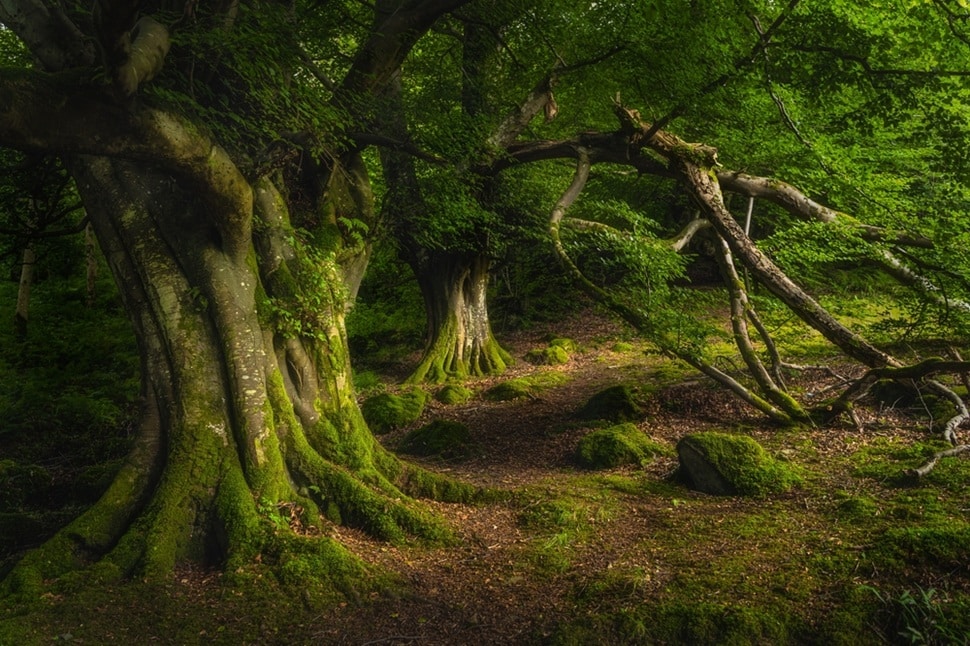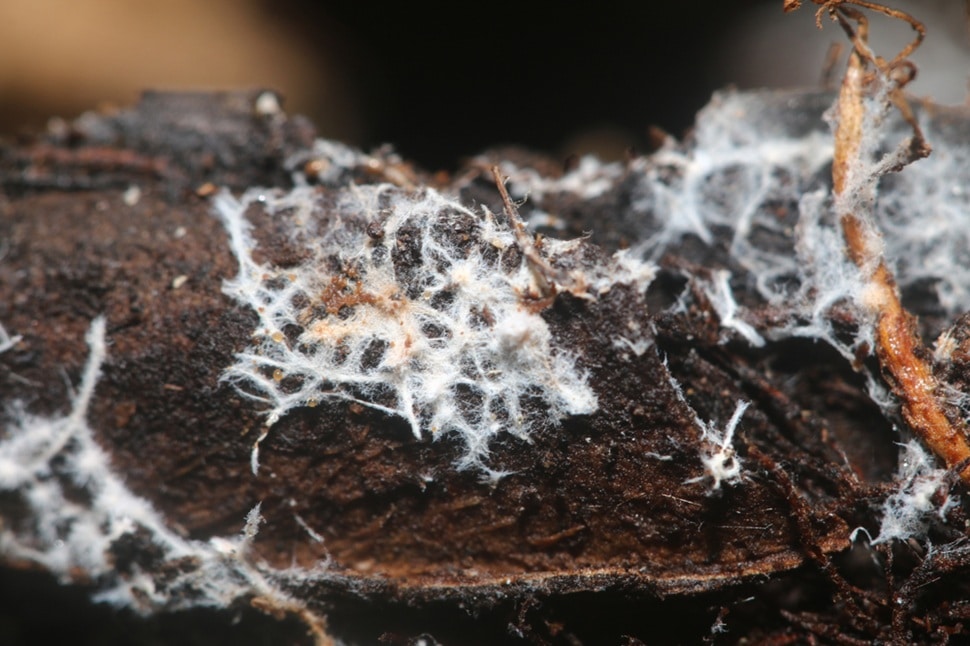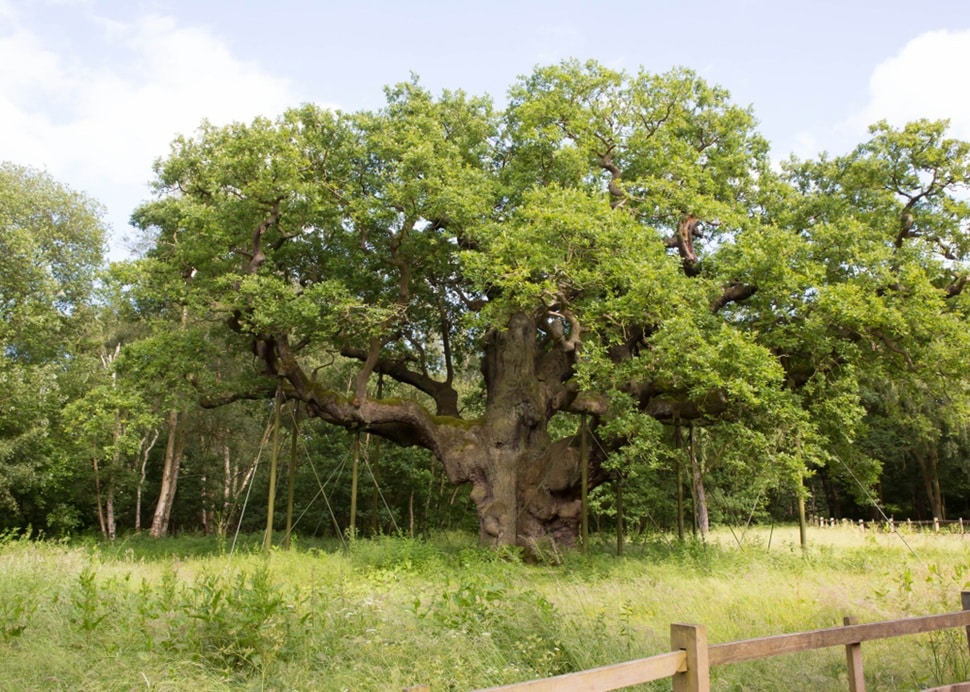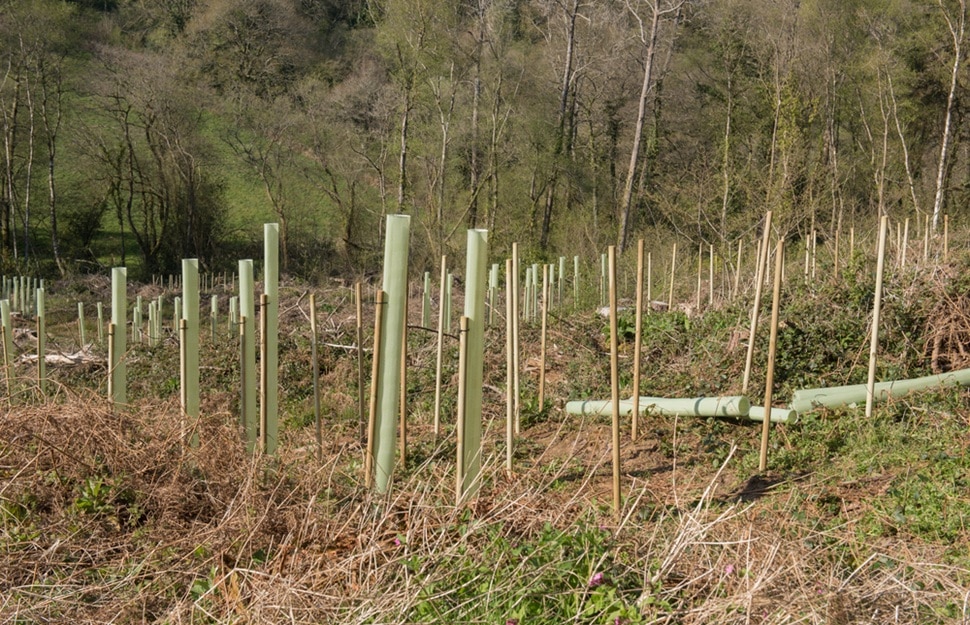
Walk through any woodland in the UK and you’d assume each tree is acting alone: reaching for light and sending out deep roots to survive. But beneath the surface is a hidden world of interaction: roots, fungi, microbes – all intertwined in what some scientists call the “wood wide web”.
Recent research is peeling back the soil to show how trees communicate, send out distress signals, share resources with other trees and actually depend on networks underground. This article dives into what science knows so far, what’s still a mystery, and gives UK examples before looking at why this hidden world matters for forests, conservation and climate on a global scale.
What is the “Wood Wide Web”?
The “wood wide web” is the popular name for networks of mycorrhizal fungi that connect the roots of trees and plants underground. Through these fungal threads (hyphae), trees can exchange signals, nutrients and water – and possibly even warn surrounding trees of pests or drought in the same way.
- Mycorrhizal fungi (arbuscular fungi) form symbiotic relationships with a tree’s roots: the tree supplies sugars from photosynthesis and the fungi help the tree gather water, nitrogen, phosphorus and other nutrients from forest soil.
- Common mycorrhizal networks (CMNs) occur when the same fungal organism connects roots of multiple trees, creating pathways for resource exchange.
Recent research has revealed that trees in forests share nutrients, send warning signals to one another, and even support each other through vast underground networks of fungi known as arbuscular mycorrhizae. These symbiotic systems link the roots of different plant species via the “wood wide web.”
Studies published in Nature Journal and carried out by researchers across institutions including Stanford University and the Crowther Lab, are uncovering how these networks of mycorrhizal ecology function. By tracing chemical exchanges and nutrient flows, scientists are beginning to map out how trees interact beneath the surface, offering insights into the resilience and intelligence of forest ecosystems.
Get Your Free Quote
Do you need a quote for ecology surveys, tree surveys, flood risk, contaminated land or biodiversity net gain? Contact us for your free quote.
One influential line of research, inspired by work originating in British Columbia, compares the “wood wide web” to how the brain works. Just as neurons connect to form pathways of information in our minds, mycorrhizal fungi appear to create a kind of natural information system for trees. Understanding how this “forest brain” operates could transform how we think about plant communication.
To probe these hidden systems more deeply, scientists are turning to new technologies such as machine learning and even imaging methods comparable to an MRI scan. These tools help model and visualise the flow of carbon, nitrogen, and signalling molecules underground, enabling researchers to see how a forest’s brain helps coordinate growth, resource sharing, and defence responses.
Suzanne Simard’s work in Canada demonstrated carbon transfer between birch, fir and other trees via mycorrhizal networks for the first time: a result widely cited in ecology. A professor of forest ecology, Suzanne Simard said that forests are:
centres and satellites, where the old trees were the biggest communication hubs and the smaller ones the less busy nodes (in a network of resource sharing.)
Her findings sparked excitement – and scepticism from many scientists about the mycorrhizal network theory: scientific articles followed, stating that the claims made are disconnected from the evidence. Justine Karst, an ecologist at the University of Alberta said that while there is a connection between trees and fungi, results have been over-interpreted to show that communication networks exist.
In a UK-based example, at the Birmingham Institute of Forest Research BIFoR-FACE (Free Air Carbon Enrichment) facility, University of Birmingham scientists gathered evidence on 180-year-old English oaks. Under elevated CO₂ (simulating future atmospheric conditions) these oaks adjusted their below-ground behaviour, increasing the release of small organic molecules in spring and autumn, which prime soil microbes to release nutrients in soils and meet stressed trees’ demand for nutrients.
Dr Michaela Reay, lead researcher in the BIFoR-FACE oak study said:
Roots do not simply take up nutrients and water from soils but rather exhibit smart and dynamic choreography, which involves highly specialised trade-offs with soil microbes via varied nutrient exploration strategies throughout the year.

How forests communicate underground
Here are several ways that communication and under soil networking via the wood wide web support different species of tree and forest health:
- Resource sharing: Trees in CMNs can receive nutrients when they’re shaded or stressed: older mother trees may help younger seedlings according to research by Suzanne Simard. Also, fungi beneath the forest floor extend the reach of root systems, accessing nutrient pockets trees alone cannot.
- Stress warning and defence: Studies show that when one tree is attacked by pests, neighboring trees talk via signals (chemical signals or otherwise) that travel through networks of forest fungi beneath the ground to surrounding trees, triggering defences to help one another.
- Adapting to climate change: The BIFoR-FACE oak study found that trees adjust how much work they “outsource” via a tree’s roots to microbes depending on conditions; vital as temperatures and rainfall patterns shift.
- Soil carbon storage and nutrient transfer: Fungi such as ectomycorrhizal fungi help bind carbon in soil organic matter and recycle nutrients. According to Forest Research, the carbon stocks in UK forests are large; much of that carbon is in the soil and deadwood, where these networks of fungi are active. A UCL study revealed that UK woodlands could store twice as much carbon as previously thought.

UK studies and the “wood wide web”
While much of the “wood-wide web” narrative comes from abroad and research on how global ecosystems work, there is increasing UK-based research shedding light on how trees communicate:
- The BIFoR-FACE experiment gathered evidence to show that mature oaks under elevated CO₂ change behaviour, releasing more compounds into soil that encourage beneficial microbes and fungi. This suggests trees may work harder below ground to handle future stress from climate change.
- A study from the Birmingham Institute of Forest Research in collaboration with the University of Birmingham, Can’t see the forest for the trees highlights how tree-planting programmes (many planned to increase forest cover in the UK from around13% now toward 17-20% by 2050) must think about fungi. Different fungi can influence soil carbon cycling, tree health and disease resistance. The scientific conclusions were that ignoring fungal resource transfer via networks risks creating certain types of forests that are more fragile and susceptible to climate change.
- Research on networks of ectomycorrhizal fungi shows many fungi link several tree species in some mature UK forests. One paper showed that among nearly 1,200 root tips sampled in a mixed forest, 50-70% belonged to fungi associated with three or more tree host species.

UK woodlands that illustrate underground dynamics
- Sherwood Forest, Nottinghamshire: ancient oaks form ectomycorrhizal partnerships with fungi; their dense root systems build up fungal networks that may interlink forest floor seedlings, young saplings and mature trees, boosting biodiversity and regeneration.
- Wytham Woods, Oxfordshire. At this long-term ecological research site, scientific studies support the view that fungal richness improves tree health, seedling survival, and drought resilience.
- Caledonian pinewoods, Scotland: On poor, acidic soils, fungi help Scots pine and birch access scarce nutrients and stabilise the soil.

What trees might communicate to one another
Trees seem to use these below ground networks to:
- Signal drought or water stress, allowing neighbouring trees to adjust leaf loss.
- Detect pathogens or insect attack and trigger chemical defences.
- Possibly share resources from older to younger trees.
- Adjust root and fungal activity with changing nutrients or CO₂ levels.
While the concept of trees talking to neighboring trees is fascinating, the science is still evolving on how global ecosystems work: some claims are more speculative than confirmed. More research into fungal influence in boreal forests across the global map is needed to see how global ecosystems are influenced. As researchers scale up their investigations we will gain insight into key questions and debates including:
- How much sharing is happening under natural UK conditions? Laboratory or small-scale studies show signal or carbon transfer; in real forests with many species, varying soils and weather, the magnitude and ecological impact is less clear in scientific conclusions.
- Is it altruism or competition? Some researchers argue trees are not “helping” each other so much as fungi redirecting resources, or trees “eavesdropping” on fungal signals of nutrient or water availability. A model from Oxford suggests that “eavesdropping” (trees detecting what their neighbours are doing) may be more likely than active signalling.
- Variation by species: Some tree species are more connected by networks of arbuscular fungi than others. Whether mixed woodlands benefit more is an area of active study.
- Environmental limits: Drought, soil compaction, pollution, planting of non-native trees and disturbance all degrade fungal networks.
Why underground communications matter:
- Resilience: During droughts, heat stress or pest outbreaks, trees with well-developed fungal connectivity may respond better, accessing water or nutrients beyond their own root zones, or benefitting from signals from other trees.
- Carbon storage and climate change mitigation: The UK’s forests hold billions of tonnes of CO₂ equivalent, much of that in soils. Healthy fungi help keep more carbon locked in soils.
- Restoration practices and tree planting: When planting or restoring woodlands, it’s not enough to plant trees; soil must contain healthy fungal communities and undergo minimal disturbance.
- Biodiversity: Understory plants, seedlings, insects and birds, all benefit from the stability and nutritional support that underground networks of fungi help provide.

The scene in UK woodlands
Here are some ways that UK forests likely rely on underground systems and what forest managers can encourage or protect.
- In ancient woodlands, where soils remain less disturbed and there are veteran trees, fungal connections are probably well established and offer vital defense. These old mother trees serve as hubs, helping seedlings in shaded understoreys or poorer soils. Protecting all the trees in such woods from disturbance is important.
- In newly planted woodlands, especially conifer plantations, or woodlands on disturbed or compacted soils, the fungal community may be impoverished. Restoration that includes inoculating soils, planting mixed species, and avoiding heavy machinery early on can help build connectivity and protect tree roots.
- In urban woodlands or parks, fragmentation (roads, paths, soil disturbance), pollution and compacted soils may reduce the development of fungi. Mulching and avoiding soil compaction help preserve fungal diversity.

Stewardship supports underground communication
If you care about trees, woods, or even garden trees, here are some practices that help support and maintain healthy underground networks and the “wood wide web”:
- Minimising disturbance to soil helps avoid unnecessary ploughing, deep digging or compaction from heavy machinery.
- Encourage native mixed woodlands: mixing species supports fungal diversity, as different tree species tend to partner with varied fungal species.
- Protect veteran trees: older trees and mother trees help establish and maintain fungal connections over time, acting as hubs.
- Keep soils moist: fungal networks depend on moisture; droughts, drainage or global warming can dry out soils. Mulching soil and maintaining understorey vegetation helps retain moisture.
- Support research and citizen science exploring soil health and fungi.
The “Wood Wide Web”
Forests aren’t just collections of trees – they’re intricate communities of root, fungi, microbes, insects and leaves. The more we learn about underground connections, the “wood wide web” and ectomycorrhizal fungi, the more we understand how trees support one other through drought, pest attacks and nutrient supply.
Obtaining more key information about the mycorrhizal network isn’t just academically interesting, it has real implications for how we restore woodlands, plant resilient forests and respond to climate change on a global scale. UK forests hold huge potential for carbon storage and biodiversity, but these positive effects can only be realised if we care for what’s below the surface as much as what’s above.
If forests do communicate underground via a “wood wide web” of forest fungi, then through research across the global map, restoring soil health and protecting fungal diversity, we can make them healthier and better equipped to face the uncertain climate we’re moving into.



